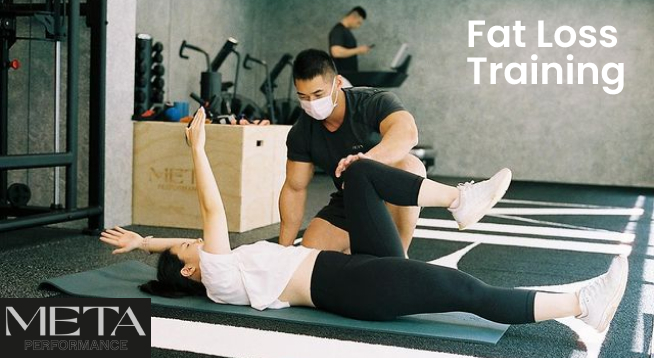This metric provides a comprehensive overview of our health, and consistently tracking it can unveil valuable insights that guide us toward tailored fitness and dietary decisions. Furthermore, amidst the multitude of health trends and fads bombarding us, having a precise metric to monitor can anchor our health journey in objective data.
Achieving an accurate measurement of body fat percentage necessitates the right knowledge and tools. With a range of methods available, from skinfold callipers to advanced scanning technologies, making an informed choice is paramount.
The Significance of Body Fat Percentage
A Comprehensive Health Metric:
- Weight alone doesn’t provide the full health picture; body fat percentage distinguishes between muscle and fat, offering a clearer health assessment.
- Two individuals with the same weight can have different body fat percentages, leading to varied health implications.
Monitoring Fitness Progress:
- Traditional scales can be misleading, as gaining muscle may result in weight gain, which isn’t necessarily negative.
- Tracking body fat percentage offers a more nuanced understanding of changes resulting from exercise and diet.
Tailoring Health Plans:
- Knowing one’s body fat percentage enables better customization of diet and exercise plans.
- Specific goals, whether focused on muscle gain or fat loss, can be established more realistically and effectively.
Common Misconceptions About Body Fat
Thin Doesn’t Always Mean Low Fat:
- A prevalent misconception is associating thinness with low body fat. However, many slender individuals can have high body fat percentages.
- This occurrence, frequently referred to as ‘skinny fat,’ can give rise to various health issues despite a person’s slim outward appearance.
The Roles of Fats:
- Not all body fats are harmful. Essential fats serve essential functions in maintaining hormonal balance, safeguarding organs, and storing energy.
- It’s critical to distinguish between essential fats and those that may have health implications.
Reliable Techniques for Determining Body Fat Percentage
Skinfold Calipers:
- This method involves pinching the skin at specific locations to measure fat.
- While cost-effective and accessible, accuracy depends on the user’s skill and experience.
Bioelectrical Impedance:
- Many modern scales and handheld devices utilize this approach, measuring fat by sending small electrical currents through the body.
- Factors such as hydration and recent meals can impact results, so maintaining consistent testing conditions is vital.
DEXA Scanning:
- Considered one of the gold standards, this technique employs X-rays for comprehensive analysis.
- In addition to body fat, it provides data on bone density, but accessibility and cost may be limiting factors.
Bod Pod:
- The Bod Pod assesses body volume and density using air displacement within a sealed chamber.
- It offers accurate results but might not be widely available.
Hydrostatic Weighing:
- Also known as ‘underwater weighing,’ this method compares regular body weight to weight when submerged in water.
- It is one of the most accurate methods but requires specialized equipment and facilities.
Infrared Interactance:
- A non-invasive method using infrared light to estimate body fat.
- While convenient, its accuracy is occasionally debated among experts.
Choosing the Appropriate Method for Your Needs
When selecting a body fat measurement method, it’s not just about accuracy; consider the following:
- Convenience: Is the method accessible and easy to use regularly?
- Budget: Initial costs and ongoing expenses can vary significantly among methods.
- Accuracy Requirements: Athletes or individuals with specific health concerns may prioritize precision over other factors.
Interpreting Body Fat Percentage Ranges
Understanding what different percentages indicate is essential:
- Essential Fat: This represents the minimum body fat required for survival, with variations by gender, being higher in women.
- Athletic: Athletes, due to intense training, typically have lower percentages.
- Fit: Individuals who engage in regular exercise or have moderate activity levels fall into this category.
- Average: Encompasses the majority of the population.
- Above Average: Significantly higher percentages may suggest potential health concerns and increased risks.
Tips for Accurate Measurements
To enhance accuracy, consistency and proper preparation are key:
- Maintain Hydration: For methods like bioelectrical impedance, hydration levels can significantly affect readings.
- Consistent Timing: Try to measure under similar conditions each time, whether it’s post-workout or in the morning.
- Use Multiple Methods: Occasionally cross-referencing results from different methods can provide a more comprehensive perspective.
Common Mistakes to Avoid
While measuring body fat percentage offers valuable insights, it’s crucial to steer clear of these mistakes:
- Relying Solely on BMI: BMI is a standard metric, but it doesn’t distinguish between muscle and fat.
- Neglecting Tool Maintenance: Devices like skinfold calipers require regular calibration to maintain accuracy.
- Chasing Daily Fluctuations: Body fat doesn’t undergo drastic changes overnight. It’s more useful to track longer-term trends than daily variations.
Conclusion
The path to comprehending and enhancing your body composition is a continuous one. Equipped with the right knowledge and tools, you can make informed choices to promote better health. With a clear grasp of body fat percentage, your fitness trainer can guide you more effectively on your journey toward improved health and fitness.

